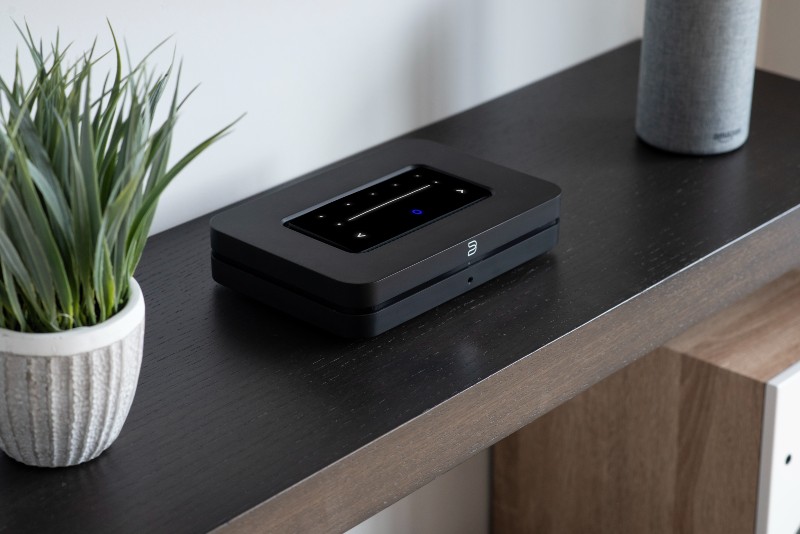TL;DR
While there may be some streamers out there that are a little more transparent, none at its price point offers the impressive blend of features and quality sound provided by the latest Bluesound NODE.
Intro
For many years, the Bluesound NODE has arguably been the best value in mid to entry-level music streamers. It has offered the broadest mix of features, and functionality for the dollar, along with being extremely easy to use.
Now in its third generation (actually fourth if you count the Node 2 and Node 2i as separate units), Bluesound has made some choice upgrades to the NODE, looking to provide smoother operation and a more engaging sound.
So does it succeed? Is the NODE still the affordable streamer to get? Does it still offer the best experience at the price point? Well, read on, and I will be happy to break it down for you!
Disclaimer: The review unit I have on hand is provided by Lenbrook. No input has been given regarding the content contained in this evaluation. The review unit will be returned once my evaluation is complete.
Build/Features
At first glance, the new $599 Bluesound NODE Wireless Music Streamer (which comes in black or white) looks a lot like its forerunner, the NODE 2i, but the more recent version has a touch smaller footprint, as well as a new touch control pad on top.
The new control pad is larger than the one provided on the 2i, and it also has a proximity sensor, meaning the buttons light up automatically when you approach the unit. This time around, you also have some preset buttons for your favorite sources on top, and you also get a volume slider in addition to volume tap controls.
On the front of the unit, you have an LED that provides status via a combination of colors and blinking, plus a 3.5mm headphone output.

The layout is also similar to its predecessor on the back of the NODE, providing RCA audio output, RCA sub out, coaxial digital out, and optical digital out. There’s also a 3.5mm combination optical digital/analog input, a USB input/output for external drives/DACs, an Ethernet connection for wired networking, and two connections for external remote functions.
In addition, the new NODE has an HDMI (eARC) connection for use with compatible TVs. However, at this point, it only accepts PCM audio.
Along with wired connections, there’s also wireless output in the form of wireless subwoofer output to a Bluesound sub or aptX HD Bluetooth output to a pair of headphones (or speakers). You can also stream music from a smartphone or laptop into the NODE.
Inside the NODE, Bluesound upgraded the processor to a Quad-Core 1.8ghz ARM Cortex™ A53 processor and upgraded the DAC section to a 32-bit/384khz design.

While the previous NODE was a pretty smooth operator, the new model is a little peppier, which manifests in buttons that respond to your touch almost instantaneously, super quick track changes, plus faster starts, and stops for the music. There’s nothing more annoying than a streamer that gets stuck on a track, and this is something I didn’t see with the NODE.
BluOS
Of course, with a streamer like this, it’s only going to be as good as its companion app or software, and fortunately, BluOS is one of the best, if not the best, control schemes (iOS, Android, Windows, macOS) in the business. It’s speedy, laid out nicely, and gives you a decent amount of flexibility over how music is organized.

It also allows for streaming from a wide variety of sources, like Spotify, Deezer, TIDAL, Qobuz, Amazon Music HD, and Internet Radio (like Sirius XM), plus you can play music from network drives. Don’t forget you can also plug in an external drive to the NODE’s USB port, and BluOS will play all of these sources out to other BluOS devices (like the DALI OBERON 7 C speakers we reviewed) via its multi-room capability. Not to mention It’s Roon Ready for the Roon fans out there.
BluOS’ file compatibility is exquisite, as it plays just about every format out there, including MP3, AAC, WMA, OGG, WMA-L, FLAC, MQA, OPUS, ALAC, WAV, AIFF, and MPEG-4 SLS files. DSD is the only significant omission I can think of.

Also, keep in mind all settings for the NODE are in the BluOS app. The good part is, like the player screen, all the settings are laid out well in the menu, so it’s easy to make changes if need be.
BluOS also makes setup a breeze. It only took about 10-15 minutes (not including firmware update) to get the NODE connected to my network, and the BluOS Android app walked me through the whole process.
By the way, if you wish to play music directly from your phone and bypass BluOS, you can play music via Airplay 2 for Apple Devices or via Spotify and TIDAL connect.
Sound
For my listening tests, I hooked the NODE up to the $1999 Denon PMA-1600NE Integrated Amplifier and a pair of $4499 Concept 300 Bookshelf Speakers (w/ matching stands). I hooked up both the Coaxial and RCA line outputs to the DENON to get a sense of how the NODE’s internal DAC compared to the one inside the integrated.
Both connections sounded pretty similar, but I found the digital connection playing through the integrated’s DAC section to be a bit sharper in terms of resolution. Most of my listening was done using the digital output, and I found the NODE to have a lively sound with a bit of lift in the upper treble and bass.
To me, It doesn’t sound that much different than the NODE 2i, which had a pleasant, inoffensive quality, but this time around, it seems like they added just a little more treble detail and warmth.

When listening to Patricia Barber’s latest album, “Clique,” via Tidal, I liked the smoothness and richness of the NODE’s sound. It was musical and inviting, plus it had a decent amount of detail which brought out the strings and cymbals without overhyping them.
Even so, I did find myself looking for just a little bit more depth and separation in the imaging. When I compared it to the $699 Audiolab 6000N Play streamer, it had just a bit more separation and air in the sound. On the other hand, the NODE isn’t far behind in that department, plus the 6000N has nowhere near the functionality of the Bluesound streamer.
The Wrap Up
As I said initially, the $599 Bluesound NODE Wireless Music Streamer has been the best overall value in affordable streamers for some time now, and that doesn’t seem to have changed with the introduction of the 3rd gen model.
While it could use just a touch more transparency, there’s still no streamer in its price range that has its mix of quality sound and the remarkable range of functionality that it offers. This streamer does it all. Once you factor in the new upgrades, which make it faster, more detailed, and easier to use than the previous generation, it’s hard not to recommend it as a top option for streamers under $1000.
Hifitrends is reader-supported. If you like what you see, and purchase through links on our site, we may earn an affiliate commission. Prices are subject to change at any time.

I’m an audio writer who started as a young audio salesman/consumer electronics professional back in the late 90s. That’s where I discovered the magic of 2-Channel sound. My hunger for great sound has led me on a delightful music quest that continues today.



Leave a Reply